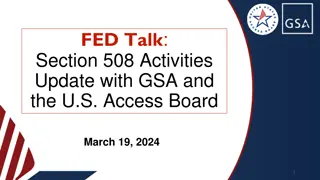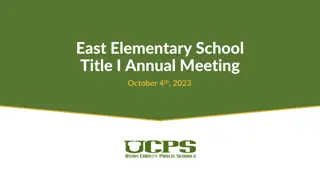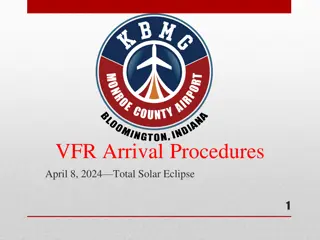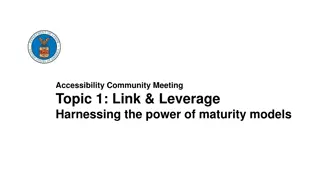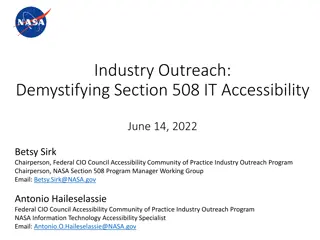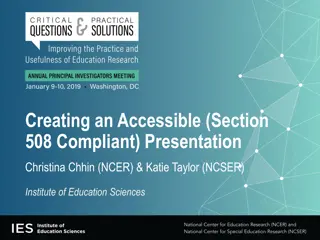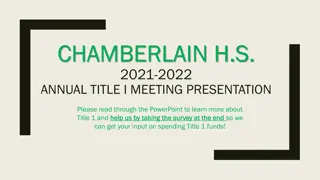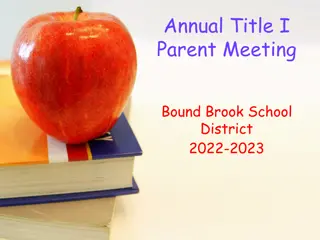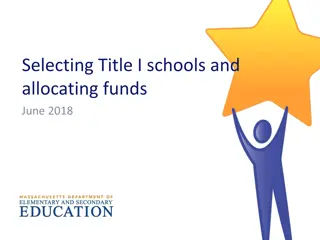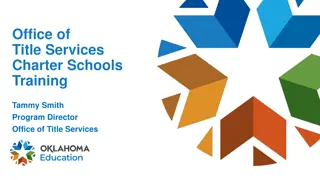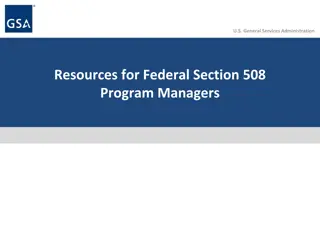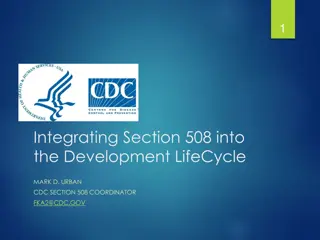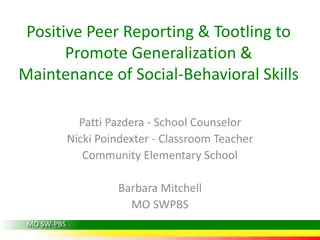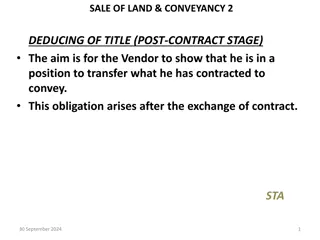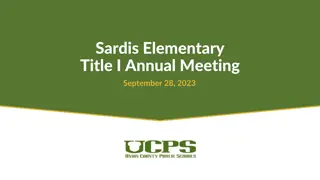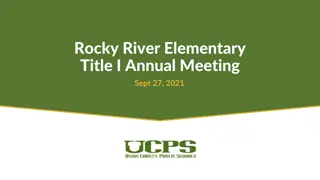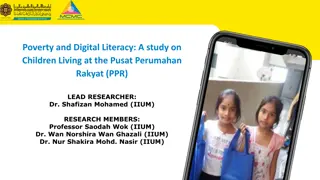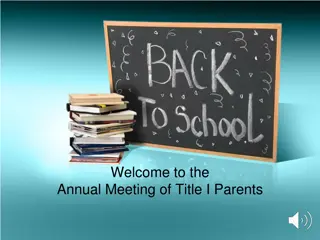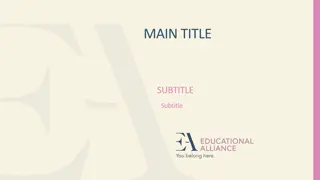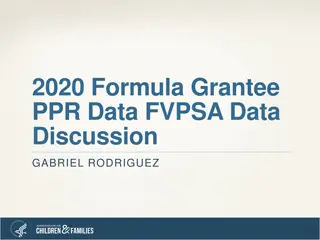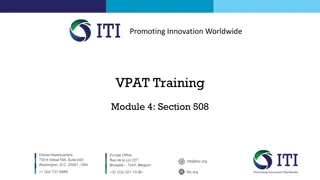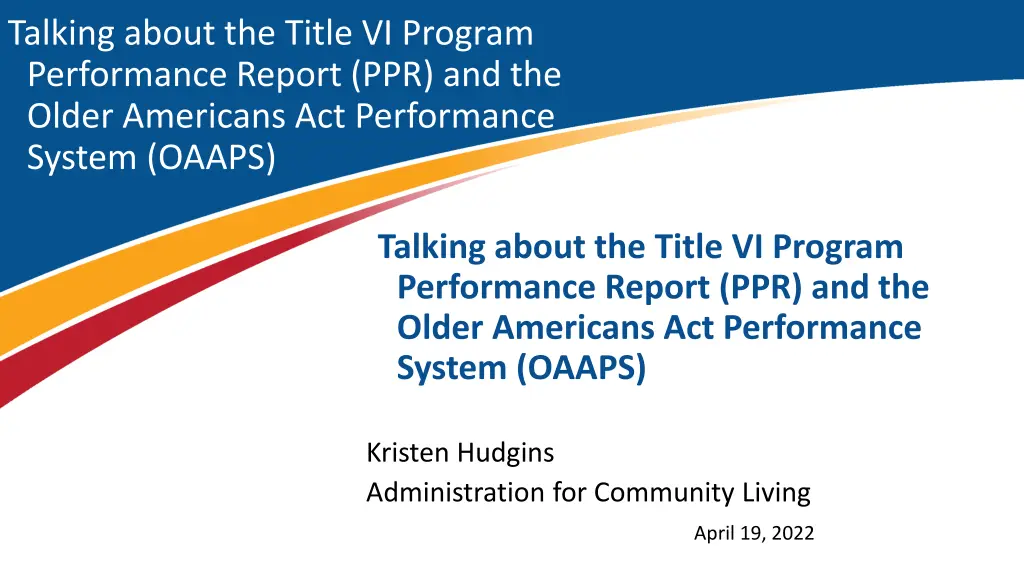
Understanding Reporting in the OAAPS System
Learn about the OAAPS system, the new reporting portal for Title VI programs. Discover how to navigate OAAPS, common issues with the PPR, and the submission process. Familiarize yourself with account basics and setting up an OAAPS account for seamless reporting.
Download Presentation

Please find below an Image/Link to download the presentation.
The content on the website is provided AS IS for your information and personal use only. It may not be sold, licensed, or shared on other websites without obtaining consent from the author. If you encounter any issues during the download, it is possible that the publisher has removed the file from their server.
You are allowed to download the files provided on this website for personal or commercial use, subject to the condition that they are used lawfully. All files are the property of their respective owners.
The content on the website is provided AS IS for your information and personal use only. It may not be sold, licensed, or shared on other websites without obtaining consent from the author.
E N D
Presentation Transcript
Talking about the Title VI Program Performance Report (PPR) and the Older Americans Act Performance System (OAAPS) Talking about the Title VI Program Performance Report (PPR) and the Older Americans Act Performance System (OAAPS) Kristen Hudgins Administration for Community Living April 19, 2022
What We Will Cover Today Some OAAPS basics Getting an account Signing in Resources https://oaaps.acl.gov https://oaaps.acl.gov Common issues with the PPR Navigating the system How different services are defined Submission process https://oaaps.acl.gov/Resources/techDocs https://oaaps.acl.gov/Resou https://oaaps.acl.gov/Resources/techDocs rces/techDocs 2
OAAPS and the PPR OAAPS is the new reporting portal for Title VI s PPR Your reporting timeframe (the data you are collecting to report) is from April 1 March 31 The reporting period (the time you have to report your data) is April 1 June 30
Getting Familiar with OAAPS Use the Resource Page! You can get to this page without signing in to OAAPS, it has A LOT of useful information about the system itself as well as the PPR
OAAPS Account Basics Your username is your firstname.lastname@portal.acl.gov If you have ever used OAAPS, you have an account If you need OAAPS help, contact OAAPSHelpdesk@acl.hhs.gov The OAAPS Resources Page has several How To Guides to help with common issues like logging in and resetting your password Activating your OAAPS Account Logging into your OAAPS Account Resetting your Password
Setting up an OAAPS Account If you do NOT have an OAAPS account you can contact OAAPSHelpdesk@acl.hhs.gov and give them the name, email address, and phone number of the person who needs an account and ACL will get that set up. You will then get an email from noreply@okta.com to walk you through setting up your OAAPS account If you do NOT get an email from noreply@okta.com it may be in your junk mail or spam if it is not there, you may need to talk to your IT department about making okta.com a safe sender.
Getting into the PPR The PPR has changed and categories have been updated For instance: Information and assistance was unduplicated elders now it is contacts Nutrition education was hours now it is sessions Transportation was only one-way trips now also unduplicated people We have new questions about number of people served in in-home services, we have questions about funding, social events.
Keep a copy of the PPR and the Definitions on hand https://oaaps.acl.gov/api/uploa d/download?title=VI&downloa dType=NewPPRForm Recommendation to keep a copy of each of these nearby and share with staff so you know how the services are defined and counted. https://oaaps.acl.gov/api/upload /download?title=VI&downloadT ype=VIComponentsAndDefs
Reporting Basics Unduplicated means individual Contacts means calls, can be texts, or emails If you have a Part A/B and a Part C program, make sure you are counting services based on who is requesting them and for what purpose. An elder asking for a grab-bar in their home should be counted under Part A/B other supportive service but if the grab-bar was requested by the elder s son as the elder s caregiver, then you should count this service as a home-modification/repair under Supplemental Services in Part C
A Note on Zeros and Variances First things first, ZEROS ARE OK. Variances are OK. Variance are changes that are 30% above or below your numbers from the previous year. Some of you will have variances on a regular basis because you serve small numbers of people and so small changes in your program make a big difference in your percentages. Variance explanations in OAAPS are ways for you to explain any changes in your program from year to year. You can go back and look at them as a historical record; and they allow ACL to understand why changes took place when reviewing your annual report. They should always explain WHY your data changed.
Required Services Part A/B Meals Congregate and Home-Delivered (unduplicated persons/meals) Information and Assistance (contacts) Part C Information and Assistance (contacts) Counseling (unduplicated persons/hours) Support Group (sessions) Caregiver Training (unduplicated persons/hours) Respite (unduplicated persons/hours) https://oaaps.acl.gov/Resources/techDocs 11
Regularly Mis- or Under- reported A/B Staff (persons) Only report if paid using ANY Title VI money. If not, put a ZERO. Information and Assistance (contacts) Every time someone calls you to ask a question about the program what you offer, what s for lunch and you help provide them with an answer and some guidance, you count it as ONE contact. Outreach (activities) Traditionally this would have been a booth at a health fair, or radio spots, or anything that makes your wider community aware of your program and the services that you provide for elders. Putting up flyers one month would count as ONE activity, doing a radio spot would be ONE activity, having a Facebook announcement on the main tribal webpage could be ONE activity. 12
Regularly Mis- or Under- reported A/B Nutrition Education (sessions) Every time you send out a flyer on a specific nutrition issue that counts as ONE session, regardless of how many people you sent it to. If you put out a nutrition article in every one of your monthly newsletters, you would count 12 sessions. If you are holding in person sessions, you would count every time you gathered elders to discuss nutrition education. Transportation (unduplicated persons/one-way trips) One-way Trips If you take an elder to the doctor, the pharmacy, and back home (so 3 stops) that counts as THREE one-way trips. If you take 4 elders and pick each one of them up and take them to the congregate meal site, and then take them back home that counts as EIGHT one- way trips. 13
Regularly Mis- or Under- reported A/B Social Events (events) Getting people together in person or virtually generally around an event. If you have a monthly elder birthday celebration, then you may have TWELVE or more social events a year. Funding Questions Congregate and Home-Delivered Meals/Supportive Services ACL does not know how much it costs to run a Title VI program. We know how much ACL gives you; but what does it COST. 14
Regularly Mis- or Under- reported C Caregiver to Elders or Individuals of any age with Alzheimer s Disease and Related Disorders (persons) These are the folks we typically think of caregivers. They are people caring for elders. They can ALSO be caring for folks with Alzheimer's and related disorders. DOES NOT have to be Elders with Alzheimer s. Elder Caregivers Caring for Children under the age of 18 (persons) Grandparents raising grandchildren should be elders, should be primary caregivers for the grandchildren. Elder Caregivers Providing Care to Adults 18-59* with disabilities (persons) Elders caring for adult children with disabilities that need support from the Title VI program for their roles as caregivers. *59 is a placeholder age for whatever the age of elder is in the program at that age; the adult with disability would be considered an elder. 15
Regularly Mis- or Under- reported C Information Services (activities) This is essentially the same as outreach under Part A/B it is letting the wider community of Caregivers know about the services you provide. If you do a radio spot and you talk about what you do for elders under Part A/B and what you do for Caregivers under Part C you can count it as TWO activities ONE under Outreach(A/B), ONE under Information Services(C). Information and Assistance (contacts) Every time someone calls you to ask a question about the program what you offer, when support group is and you help provide them with an answer and some guidance, you count it as ONE contact. 16
Regularly Mis- or Under- reported C Counseling (unduplicated persons/hours) This can be a one-on-one or group service but should be led by someone who either have training as a counselor or experience as a caregiver to serve as a peer counselor. If 15 individuals participate in weekly 1 hour counseling sessions throughout the entire year, even in multiple sessions; you should report 15 unduplicated people, and 780 hours of counseling. Support Group (sessions) Support groups are a great way to bring different (or mixed) groups of caregivers together to talk and share their concerns or talk about what is working for them as caregivers. Every time you have a group meet you count that as ONE session. 17
Regularly Mis- or Under- reported C Caregiver Training (unduplicated persons/hours) This can be a one-on-one or group service to help caregivers with skills they may need. If you have 30 caregivers attend a 2-hour CPR training, you will count that as 30 unduplicated people and 2 hours of training. Supplemental Services (service category/description of service/ unduplicated caregivers) Most importantly, these must be services requested BY THE CAREGIVER. The services may benefit an elder, but they must be at the request OF THE CAREGIVER. 18
Regularly Mis- or Under- reported C Respite Care (unduplicated persons/hours) This is reported by type of caregiver Respite is a service that gives the caregiver a break from providing care Respite means someone else watches the person who needs care so the caregiver can go to the store, can go to a doctor s appointment, can go to work, can go and do whatever they need to without worrying about their loved one s care. 19
Quick Overview Signing In Validating Data Quick OAAPS Walkthrough Generating Variances Submitting Data
Questions Kristen.Hudgins@acl.hhs.gov Kristen.Hudgins@acl.hhs.gov 202-795-7732

